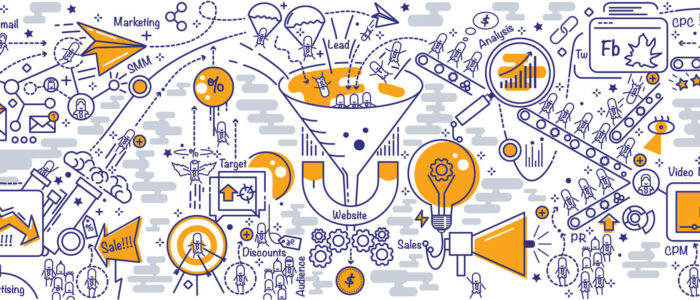February 12, 2018
TACTIX5
Inbound Marketing and Outbound Marketing are terms to describe two fundamentally different approaches to marketing. The differences between both approaches are outlined below:
| Inbound Marketing |
Outbound Marketing |
| Pulls in interested consumers |
Pushes at everybody, regardless of interest |
| Written for consumers needs |
Written for the brand’s/product’s need |
| Interactive & fluid |
Inert, one-way |
| Draws customers in |
Seeks out customers |
| Is a natural part of content consumption |
Disrupts content consumption |
| Natural habitat: Blogs, social media, opt in emails, search, influencer marketing |
Natural habitat: display ads, billboards, telemarketer calls, magazines, TV ads |
What is Outbound Marketing?
Outbound marketing is interruption-based marketing. Its premise is to find a medium with a large following and periodically interrupt that following with disassociated ads. The hope is that with some careful planning and a study of the demographics, a small percentage of the audience will listen to the interruption in the storyline and convert in to a customer. If you can find a large enough following or an above average association, the small percentage of conversions will be worth the investment. Those opportunities are increasingly more like a needle in a haystack. Outbound marketing has fallen out of favour in the last 10 years. Oversaturation — especially on the internet — caused people to start ignoring display advertising.
Examples: TV, Radio, Direct Mail, Newspaper, Billboards, Telemarketing, Display Ads, etc.
What is Inbound Marketing:
The main focus of Inbound Marketing is attracting customers through relevant and helpful content and adding value at every stage in your customer’s purchasing journey. But unlike outbound marketing, inbound marketing does not need to fight for potential customers’ attention. By crafting content designed to address the problems and needs of your ideal customers, you attract qualified prospects and build trust and credibility for your business.
Inbound marketing is permission-based marketing. There are two premises here:
- First, communicate via mediums in which the audience has given you permission to communicate.
- Second, answer the questions people are asking and proliferate those answers around the web in anticipation of the question.
Both of these premises are permission-based. In the first method, the audience is smaller in numbers than mass media, but because the audience is inherently friendlier and has already raised their hand to get your messages, the audience converts at a 750% higher rate than interruption-based marketing.
Examples: subscription-based email marketing, social media, blog subscribers, webinar attendees, etc.
In the second method, the numbers are virtually limitless, since your audience online is infinite. Thanks to targeting keywords, you can answer the questions prospects might be asking about your products and your industry. Since this audience is looking for the answers that you are proliferating throughout the web, the conversion rates are unparalleled.
Examples: SEO, keyword targeting, landing page strategy, content/blog strategy, etc.
Inbound Marketing, the Winner?
Inbound marketing is the more fashionable marketing choice right now. According to Hubspot’s State of Inbound 2017, 71% of companies globally reported that they’re primarily focused on inbound. Certainly inbound provides a better ROI: inbound marketing efforts are 62% less expensive than outbound.
Outbound marketing is traditionally expensive, not responsive, and not targeted. While most companies aren’t going to increase spending on those kinds of outbound advertising, recent upgrades in audience targeting are breathing new life into display advertising. Things like retargeting pixels, contextual ads, and Lookalike Audiences allow Facebook, Instagram, Twitter, and Google display ads to be directed specifically to users based on what they are interested in. This kind of outbound marketing shows untapped potential and unlike outbound marketing of the past, it incorporates inbound’s strategy of showing users things they specifically will find helpful or interesting.
In today’s marketing landscape, many companies employ a combination of a brilliant inbound strategy and retargeting outbound display ads. At the very least, every business should be using an inbound strategy alongside their outbound marketing strategy.
Need more Lead Generation tactics? Know how to Qualify a Lead in 60 Seconds? Need some Lead Generation Ideas? Here are some Lead Nurturing Tactics.
Resources:
https://www.outbrain.com/blog/inbound-vs-outbound-marketing/
https://vtldesign.com/digital-marketing/inbound-marketing-vs-outbound-marketing/
https://www.blendb2b.com/blog/inbound-marketing-vs-outbound-marketing
https://www.outbrain.com/help/advertisers/inbound-outbound-marketing/
https://www.hubspot.com/inbound-marketing
https://www.wordstream.com/outbound-marketing




